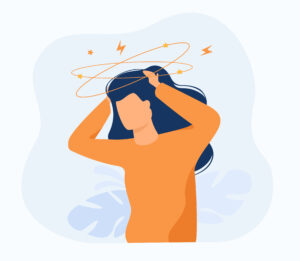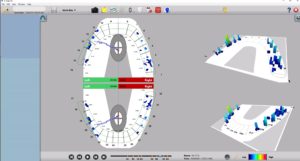
Life in balance. This seems to be a new buzz phrase that describes the benefits of keeping work, family/social time, time for self, and spiritual reflection in a balanced “Jenga” of sorts. The goal of this balance is to help us fulfill the needs of our lives physically and psychologically. This is based on the belief that there are numerous benefits to keeping things in proper balance.
Balance is especially important when it comes to the body, both mentally and physically. When the structural components of the body are out of balance, such as one leg being shorter than the other, the body tries to compensate. This may be through an altered gait or motivating the individual to lean more to one side. Unfortunately, these adjustments typically have undesirable consequences, oftentimes in other areas.
An example of this can be through a TMJ disorder.
The acronym “TMJ” is often used to refer to problems associated with the temporomandibular joints. The TMJ are your jaw joints where the lower jaw is hinged to the skull. The upper jaw is a part of the skull and does not move. However, the lower jaw moves — a lot.
The lower jaw and thus, the jaw joints, move every time you bite, chew, speak, laugh, sneeze, and even slightly every time you swallow. The jaw joints, located just in front of the ears, house the joint’s condyle, the end portions of the jaw that rotate whenever the lower jaw moves.
With all the back-&-forth movement of the condyle, its balance within the joint is very important. Without it moving fluidly, it can eventually cause the joint and muscles surrounding it to become strained. This consistent strain can lead to inflammation that extends far beyond the joints.
For example, the delicate mechanisms of the inner ear are in close proximity to the jaw joints. When the inflammation reaches this area, ear ringing and dizziness can occur. Because neuromuscular dentistry is not a skill available in all dental offices, the TMJ can be easily overlooked as the cause. .
Typically, the origination of TMJ problems is the result of a misaligned bite. Although genetic disparities or accidents or injuries can disrupt the balance within the jaw joints, bite misalignment is often the true culprit. This is where neuromuscular dentistry provides patients with a “leg up.”
Neuromuscular dentistry is based on the understanding that all craniofacial structures (that include the TMJ, muscles, tendons, bones and teeth) must work harmoniously during chewing, speaking, and in resting positions. Without a unified flow among these structures, the eventual results can have severe consequences.
A neuromuscular dentist is trained to incorporate neuromuscular considerations into restorative and cosmetic dental treatment. This helps patients to avoid problems in the future or correct those they may have been struggling with for years.
For example, the cause of frequent headaches or migraines can be a disparity in one’s dental anatomy. And, it doesn’t take much. Only one millimeter (1/25th of an inch) can disrupt harmonious bite alignment and lead to malocclusion. This disparity can extend out to the facial muscles, jaw joints, and even the structures that involve the ears.
In our Macomb County dental office, we combine advanced skills and training with some of the industry’s most advanced technology. Here, we offer Cone Beam imaging, a system that captures clear, concise and intricate views at the lowest radiation levels possible. In one pass, these images are ideal for the assessment of the jaws and evaluation of the TMJ (jaw joints).
We also use the BioPak system to record the functions and congruity of the upper and lower jaw, jaw joints, and associated muscles at various ranges. This information is a significant aid in proper diagnosis and treatment planning for TMJ disorder as well as sleep disorders and craniofacial pain.
TekScan (T-Scan™) is also featured in our Shelby Twp dental office. T-Scan is the only technology that shows the measured force and the timing of chewing surfaces coming together for the overall bite.
Check out more on our advanced technology through a brief video at: DrBarbatTechnology
These problems are often overlooked, even by other dentist. Too, adults do not realize that bite misalignment can exist even though the teeth appear straight. For example, some flaws, such as an open bite or even crowns being mis-proportioned to the tooth above or below, may not be obvious to the individual.
By incorporating neuromuscular measures into patient procedures (including crowns, crown & bridge, dental implants, cosmetic dentistry), the delicate balance in the mouth becomes a part of treatment.
By blending these skills into patient care, a neuromuscular dentist can resolve or help patients avoid TMJ disorder symptoms, which may include:
– frequent headaches and/or migraines
– jaw soreness
– ear ringing
– dizziness
– tingling fingers
– muscle soreness in the face, neck or shoulder(s)
– jaw popping
– difficulty opening the mouth fully
– teeth that become chipped, broken, worn or fractured
– night-time clenching and/or grinding
– sore neck and shoulder muscles
If you are experiencing any of these, let’s begin by discussing your options and the diagnostic process during a no-cost consultation. Call 586-739-2155 or Tap Here to schedule. During this private time together, I’ll answer your questions and explain the treatment that may be best for your needs.
You are also invited to watch a brief video on TMJ disorder care in our office: DrBarbatTMJ
And, enjoy a quick tour of our Macomb County dental office at: DrBarbatOfficeTour